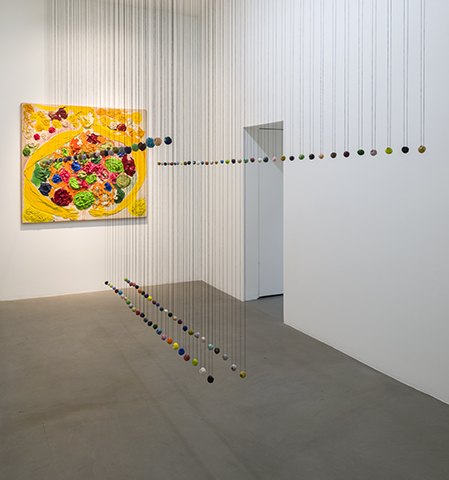Polly Apfelbaum and Dona Nelson’s collaboration yields surprising relationships among artworks, viewers, and surrounding architecture.
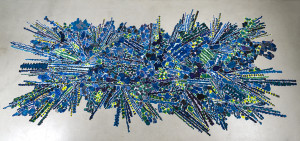
Polly Apfelbaum, Blue Joni (2016), courtesy of the artist and Michael Benevento.
Each artist’s celebrated inventiveness is amply represented. Collaged from dyed velvet, Apfelbaum’s Blue Joni (2016) and Brown Sugar (2016) floor paintings evoke coral reefs or sub-microscopic algae as much as they connote throw rugs or messy spills.
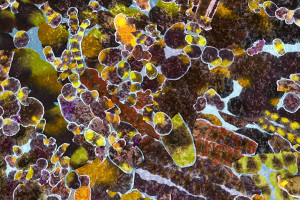
Polly Apfelbaum, Brown Sugar (detail) 2016, courtesy of the artist and Michael Benevento.
Nelson’s double-sided pictures literally expand painting’s scope while staying within its framework. She further conflates figure and ground, front and back, by bunching up string and fabric strips like thick brushstrokes and stitching stiff threads into the canvas so they come out like electrical wires on the other side.
The artists’ eccentric displays of painterly ingenuity culminate in innovative placements that enforce unexpected views of each artwork.

Polly Apfelbaum, Sight Line, Knee Line (2016), courtesy of the artist and Michael Benevento.
Apfelbaum’s Sight Line, Knee Line (2016) foils a traditional viewing of Dona Nelson’s Full Sack (1990). It is impossible to view the painting apart from dangling strings. Yet the two complement one another: ceramic beads seem to emanate from the sack. Viewed frontally, painting, strings and beads coalesce into an open-armed button doll. Though created 26 years apart, here the two discrete works are inseparable.
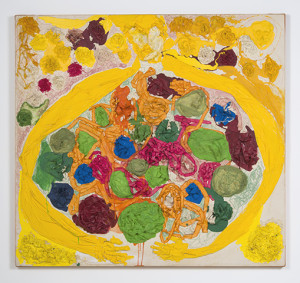
Dona Nelson, Full Sack (1990), courtesy of the artist and Michael Benevento.
Throughout the exhibition, artworks function as architecture as much as they inhabit it. Apfelbaum’s beaded string installations often act as walls or narrow hallways. In one instance, they crowd viewers closer to Nelson’s Hair Conditioning (2011), which obscures a doorway and narrows passage.
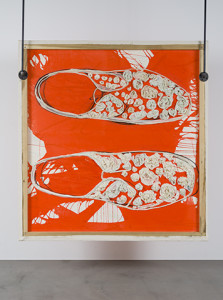
Dona Nelson, Shoe Painting (2011), courtesy of the artist and Michael Benevento.
The position of Nelson’s Shoe Painting (2011) encourages viewers to squeeze between wall and painting. The forced intimacy is a trick: standing with his back to the wall, too close to apprehend the painting in its entirety, a viewer may be stricken with the uncanny sensation that the painting is staring at him instead. It’s confrontational yet funny. Outward-pointing spotlights at the reverse of Yellow Wood (2003) highlight a similarly humorous incongruity.
Some works resonate gallery architecture as though they belonged there all along. Chocolate splotches in Brown Sugar, along with frameworks in Nelson’s Iuka (2015) match ceiling beams.
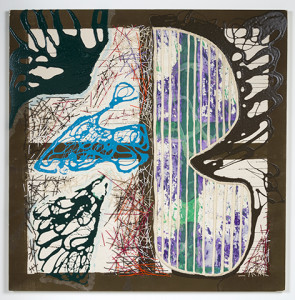
Dona Nelson, Iuka (2015), courtesy of the artist and Michael Benevento.
Like compositional elements, individual artworks play off one another and their overall format. The artists have transformed the gallery into a total composition that guides not only eyes, but entire bodies, around a 3D painting that reflects its creators’ tenacious peculiarity and forceful ambition in extending the medium’s possibilities.
Polly Apfelbaum/Dona Nelson, “Erasing, Tracing, Racing Paint,” March 12-May 7, 2016 at Michael Benevento, 3712 Beverly Boulevard, Los Angeles, CA, 90004, www.beneventolosangeles.com.

